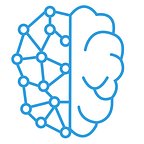Society of minds: reflections on decision-making, control, modelling and inference with humans and machines
Posted by Eliezer de Souza on 5. februar 2019
We are living in an era of growing interest around the fuzzy concept of «Artificial Intelligence» and related ideas such as «Machine Learning» and «Big Data». This surge has been mostly driven by emerging computational power, clever designed and scalable algorithms, data availability and new models capable of delivering systems with human-level (or close to) capabilities in a set of complex tasks in natural language processing, computer vision, automatic control and automatic decision making. As researchers, students and industrials we are attracted to these ideas because of the big questions around intelligence (including our own, as human) and the potential of unlocking new capabilities and positive societal, economical and individual opportunities. As we navigate the multiplex of ideas and trends around the question of intelligence we hope to unfold and connect some components that can be crucial for further developments.
As our the body of knowledge moved from conceptual and speculative arenas towards empirical and testable theories, systems and models, we see the emergence of a new engineering discipline — a human-centric engineering discipline1. As an emerging discipline, the state of the affairs today is a mix of connected components without a central all encompassing theory, although feeding from many well established disciplines including but not limited to control theory, information theory, statistics, optimization, computer science, neuroscience, economics, mathematics, logic and philosophy. In this talk we intend to look very briefly at a single thread on this multiplex of ideas: machine understanding and prediction of human behavior (group and individually) and the interactions between humans, machines and the larger environment. The main modelling tool that will focus on is probabilistic/statistical modelling, a consequence of the hypothesis that we are looking at stochastic phenomena.
Focusing on the problem of recommender system we can explore some of these questions. Traditional recommender systems try to estimate a function of rating for each pair of user and item, based on previous items already rated by the user (or other similar user ratings, content of the item, or contextual information) — it is generally stated as a problem of matrix factorization and completion. The classical approach of matrix factorization for collaborative filtering consist in assuming factors for rows and columns of the matrix (user and items), using past entries as training dataset and inferring what factors are the best to predict the entries of the matrix — a prediction problem. Nevertheless by deploying purely predictive recommender systems into an online system we are more and more influencing also how the user will behave, dynamically influencing the behavior that initially we wanted to just predict — a growing concern of this types of situations are being addressed by the emergent field of algorithmic bias2. The observation of the double direction of causal influence is significant and points to similar observation done by Wiener and colleagues while being involved in the transdisciplinar research program that culminated in the new field of Cybernetics — the study of control and communication in the animal and the machine3. Thus, at the same time that there is a process of pushing further the point of human agency in the human-machine systems, it has becoming more clear that is not a pure matter of substitution of human cognition, we should be aiming at augmenting human capabilities and cooperative cognition between different types modalities of cognition4. New models has been developed recently where cooperation of humans and machinic cognition are taken as the basic feedback loop (Human-in-the-loop systems), as well of machine capabilities of learning with few examples, semi-supervised and simulating models, we should also discuss some research being done at NTNU AI Lab on that regard.
As an open-ended and more speculative turn, the concept of purpose in the decision-making process is yet obscured and hidden by the designer choices of loss function, regularization, dataset and the existing meta-information for each data point. There are many theoretical and computational challenges that when we are looking at task specific system is less obvious, nevertheless it is necessary to address it properly when thinking in broader terms on the interplay of decision-making and inference and as we deploy more general purpose system for the public.
Hopefully you will be instigated to look further and enthusiastically at the many challenges and potential outcomes of this research area. All of these are just entry points to big areas of research and I hope to have made it more clear to some of you.
Eliezer de Souza da Silva
PhD Research Fellow at Norwegian University of Science and Technology (NTNU)
